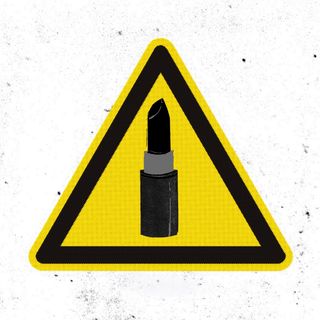
Loud Music, Venues Could Be Putting Over 1 Billion Young People at Risk of Hearing Loss
A review of two decades of research estimates the number of people at risk of hearing loss to be close to 1.35 billion people aged 12-34.

Listening to music is easily among those activities that humans seem to be unable to let go of. Many begin and end their days with music. It is both a deeply personal indulgence, as well as a communal activity. It may also have remarkable healing properties. However, loud music may cause hearing loss on a global scale. This is what a new study, published this week in the journal BMJ Global Health, claims.
The research was a review of 35 previous studies on personal listening devices (mobile phones, walkmans, iPods, and other digital music players) and loud entertainment venues (clubs, pubs, gigs, etc) conducted between 2000 and 2021. It observed that close to 1.35 billion people aged 12-34 may be at risk of hearing loss — and held that unsafe listening practices while using these devices or while visiting these venues are the primary factors.
In their research, the scientists considered previous records on the listening practices of more than 19,000 individuals across 35 studies carried out in the last two decades. For standardization purposes, the researchers identified unsafe listening as listening to music above 80 decibels — equivalent to the sound of a crowded street in a busy city, the sound created by old loud vacuum cleaners, or the sound of a telephone ringing at full volume — for more than 40 hours every week. 80 decibels is often the level at which governments mandate industries to employ hearing protection processes.
The researchers observed that in their sample, more than 23% of youth were listening to music on their devices at volumes and durations above this safe level. When it came to clubs and music gigs, the numbers are even more concerning. Almost 50% of the researchers’ sample was found to breach these safety levels in loud entertainment venues. Based on these numbers, the scientists attempted to estimate the number of young people affected by unsafe listening practices worldwide. “The global estimated number of young people who could be at risk of hearing loss from exposure to unsafe listening practices ranged from 0.67 to 1.35 billion,” the scientists note in their study.
According to the World Health Organization (WHO), around 1.5 billion individuals across the globe suffer from hearing loss currently. Among these are 34 million children, among whom “60% of cases are due to preventable causes.” Unsafe music listening practices among young individuals could increase this number drastically. The impacts of hearing loss can be severe and far-reaching. It can create difficulties in communicating with other people. Among children, hearing loss can lead to delayed language development. Among older people, it can lead to loneliness and frustration. People without the ability of hearing, across age groups, have to face social isolation. Further, “Children with hearing loss… in developing countries rarely receive any schooling,” the WHO notes.
Related on The Swaddle:
How Music May Make People Less Cautious While Driving, Working
On most days, to most people, music is a good thing. And it can have remarkable healing effects. Earlier this year The Swaddle highlighted the benefits of music on human mental health, noting that researchers found it to be as good as exercising in many cases.
On the other hand, noise may be equally harmful. And at times, there is only a very fine line to distinguish between the two. Noise can cause multiple health risks. Audiology and Sound Pathology researcher Robert Cowan, writing in The Conversation, notes that “Loud noise, including music, can kill off hair cells and membranes in the inner ear (the cochlea). Once hearing is lost, a person mightn’t be able to hear or understand speech or sounds around them.”
Noise can also cause several other health issues such as cardiovascular diseases, type 2 diabetes, sleep disturbances, and long-term mental health issues. The current study highlights how present listening practices have breached the line between noise and music, potentially endangering hearing in over a billion young people.
The scientists acknowledge certain limitations in their study. They note that most of the studies they reviewed “were from European and American regions and thus may not be reflective of unsafe listening practices in other regions.” They add, “there were no studies from low-income countries eligible for inclusion in the meta-analysis, and therefore the estimates of prevalence or global burden may not capture unsafe listening practices in low-income countries.” However, they speculate that it is highly likely that unsafe listening practices are equally — if not more — prevalent in developing countries too, given the lack of safe hearing regulations in most of those countries.
The scientists highlight that hearing loss from unsafe music listening practices is easily preventable. Cowan notes that it is much easier to incorporate hearing protection on a personal level than on a community level. For instance, “most phones now come with software that can monitor safe listening levels and limit exposure.” While acknowledging that change is more difficult to come by in loud venues, Cowan suggests that people can easily incorporate some lifestyle choices — such as limiting their visits to venues playing loud music, and wearing ear-muffs or ear-plugs whenever they choose to visit these venues, to protect their hearing.
Amlan Sarkar is a staff writer at TheSwaddle. He writes about the intersection between pop culture and politics. You can reach him on Instagram @amlansarkr.
Related


Toxic Chemicals in Cosmetics, Packaging, Increase Uterine Fibroid Growth: Study
